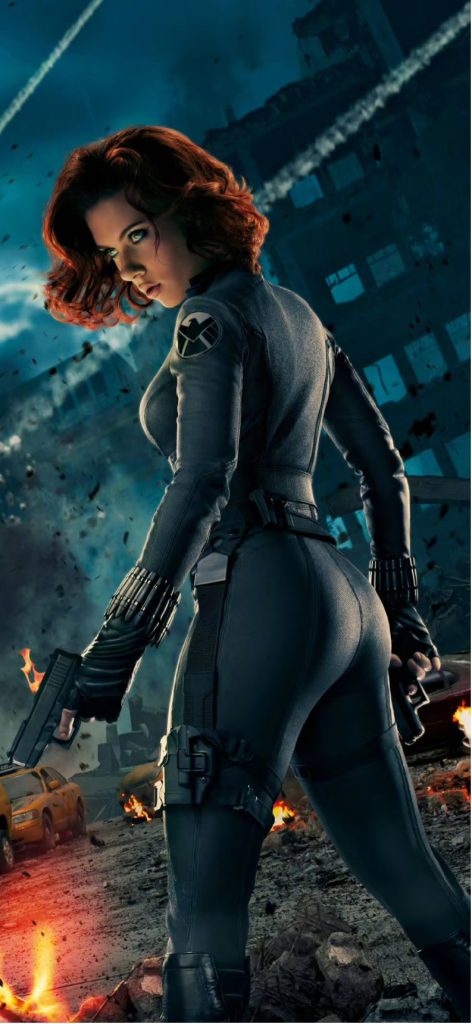The male gaze was first proposed by Laura Mulvey in 1975 in her thesis on Visual Pleasure and Narrative cinema, the core of which is that under male vision, women are usually used as visual objects to satisfy and be “consumed” by men. At this point, women are objectified under this gaze and portrayed as conforming to male aesthetics and desires.
The male gaze was first proposed by Laura Mulvey in 1975 in her thesis on Visual Pleasure and Narrative cinema, the core of which is that under male vision, women are usually used as visual objects to satisfy and be “consumed” by men. At this point, women are objectified under this gaze and portrayed as conforming to male aesthetics and desires.
- Sexualized images in the media: In many superhero movies, the costume design of female heroes such as Black Widow and Lois in Superman, the clothing they wear (tights) shows sexiness and reflects the perfect body curves of women, rather than emphasizing their strong abilities as heroes, and the appearance of Black Widow focuses on her body rather than her outstanding abilities. This reflects the sexualization and objectification of women, because there is such an image, so that the movie box office rise, impenetrable is actually objectification of women. According to a study by the University of California in the United States, in the 100 highest-grossing movies in 2019, about 31.9% of female characters are wearing sexualized clothing, while only 7.1% of men’╝łSmith 2019’╝ē, such a set of data can clearly reflect the dominance of men as visual, women are being objectified and sexualized in many film and television works.
- Pop music Mv: Some pop song videos clearly reflect the objectification of women. For example, in some mv videos, men are in the dominant position in the video, while many women are “decorative” existence, and they will play with provocative poses and wear sexy clothes, which has nothing to do with the content of the lyrics, but only to cater to the aesthetic under the gaze of men. Not only that, some mv videos with only women appear alone will show sexy female images.
These examples all reflect the objectification and sexualization of women under the male gaze, but in recent years, with the deepening of the social concept of gender equality, many films have begun to show the theme of female power.
Barbie is a very typical female movie creation, with pink as the color of the entire movie. Barbie is not only a toy image, but also a symbol of female independence, confidence and diversity. Through Barbie’s self-growth and discovery, the film breaks the stereotype of women and breaks through the label of women, and the audience shows the rise of female power and women are bravely pursuing freedom and independence.
The male gaze reinforces stereotypes and gender inequality by objectifying and sexualizing women. This kind of objectification not only exists in the media, but also affects to a large extent the overall understanding of the social image of women and women’s evaluation of themselves. Therefore, breaking the framework of the male gaze requires a diverse narrative and empowering women to achieve and promote gender equality.
Reference
Smith, S. L., et al. (2019). Inclusion in Film:USC Annenberg Inclusion Initiative.





Hi! Thanks for your sharing! The male gaze is a hot topic today, you use examples like superhero movies and pop music videos to show how women are objectified and sexualized. I find the part where you mention the rise of female power in recent years compelling, such as the example of the Barbie movie. I also have another thought. Besides movies and music, advertising often reflects the male gaze. Many advertisements focus on showing women in sexualized ways, like using revealing clothing or provocative poses, to attract attention. For example, perfume and car ads often portray women as objects of desire, reducing their role to just being visually appealing. These portrayals reinforce the idea of women existing mainly for male pleasure. However, in recent years, there has been progress. Some brands have started showing women as strong, independent, and diverse, challenging these stereotypes. I think this shift in advertising is an important step in changing the way women are represented in media.
I think your example is very apt. Most film and television directors today are men, and they only show what they think women look like. Most of these impressions objectify or sexualize women and do not see more social value in women. This impression is easily rooted in the problem of gender inequality in society. But now women are waking up and slowly making efforts and changes for their communities.